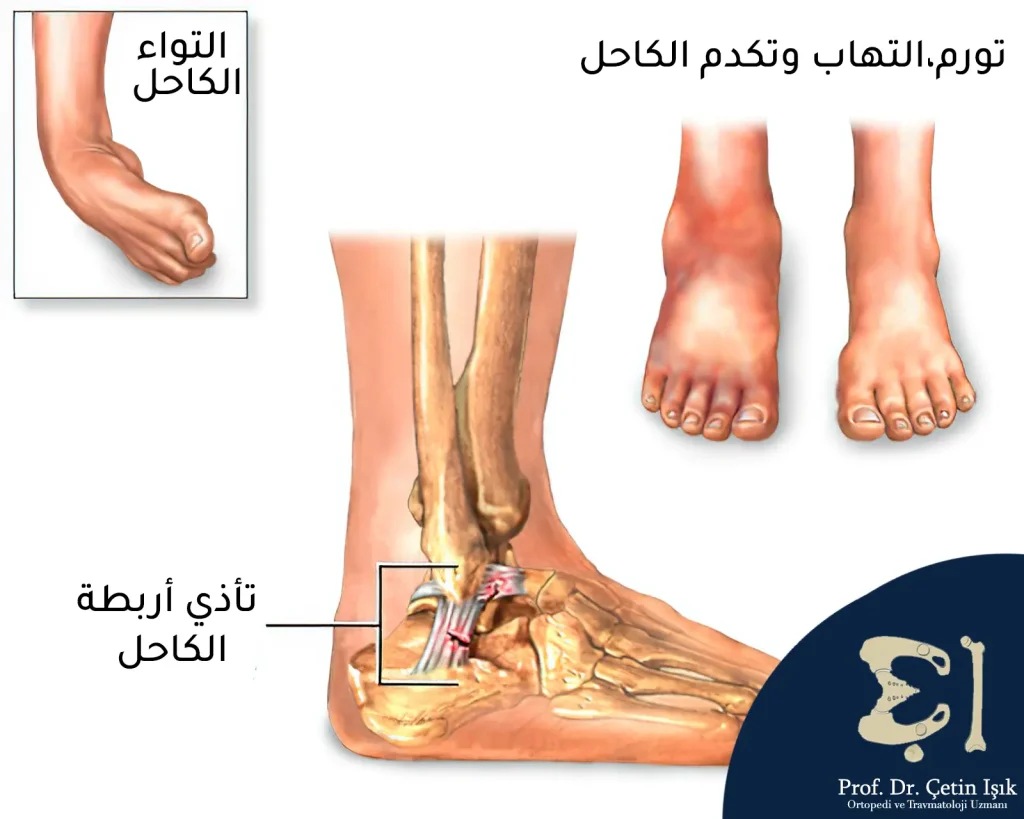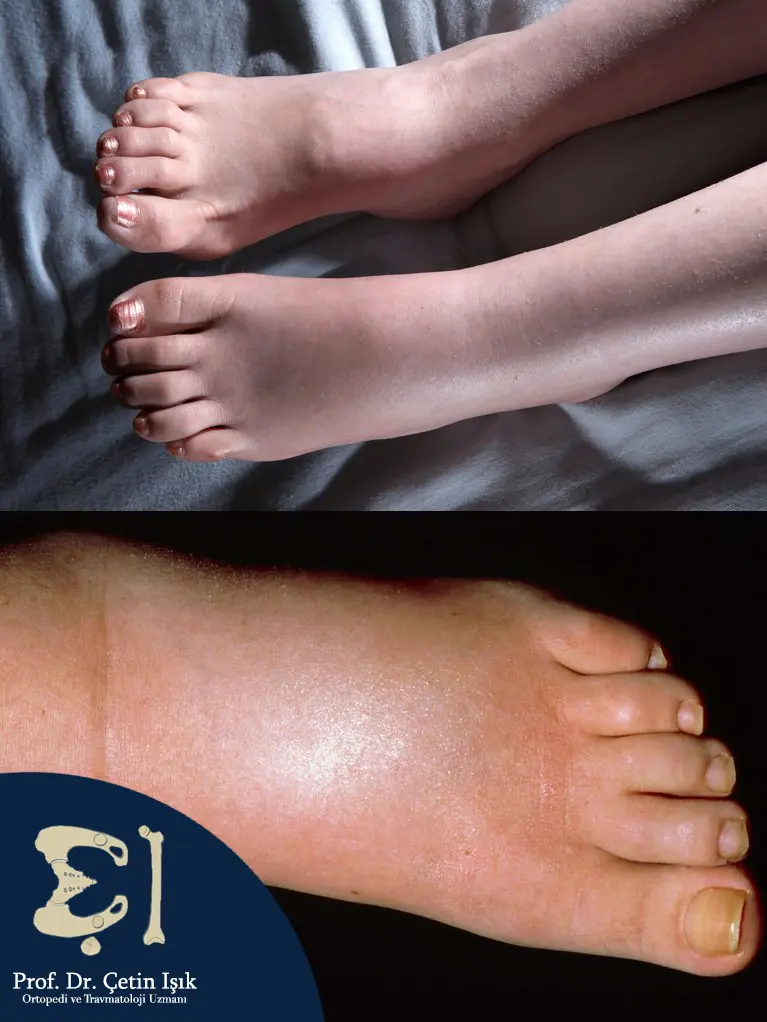Ankle swelling is a common condition characterized by swelling of the ankle joint caused by fluid accumulation around the tissues of the feet and ankle as a result of many causes, such as trauma, which leads to difficulty walking.
Ankle swelling may result from some diseases, such as heart failure and kidney failure, which calls for concern and the need to treat the cause of the swelling. So what is ankle swelling? Is it a serious problem?
What is ankle swelling?
Ankle Swelling is swelling and swelling in the ankle area due to the accumulation of fluid around the soft tissue, which leads to difficulty walking, and the patient may feel pain depending on the cause of the swelling.
Swellings are usually common in the ankle due to the effect of gravity on fluids in the human body, but it is not the only reason for swelling in the ankle. It may occur due to injury and inflammation. Ankle swelling may result from serious medical conditions, especially when accompanied by other symptoms such as chest pain, difficulty breathing, and dizziness. And mental confusion.

Causes of ankle swelling
It is happening Ankle swelling Due to the accumulation of fluid in the feet and ankles, called edema, edema occurs due to:
- Standing or sitting in the same position for a long time
- Obesity: Excess weight can put additional pressure on the veins in the legs, hindering blood flow
- Trauma: An injury such as a sprained ankle joint and...Ankle fractures To his swelling
- Infections: It may cause infections, such as: Foot arthritis The ankle, tendons, or bursae cause swelling of the ankle
- Medications: such as antidepressants (tricyclic), antihypertensive medications from the calcium channel blocker category, birth control pills (due to hormones), and steroids.
- Vascular disorders: Vascular diseases can cause difficulty with blood flow, such as deep vein thrombosis (DVT).
- Heart problems: Some heart diseases can cause edema in the lower extremities, especially the ankles, such as heart failure
- Liver and kidney disease: Liver and kidney disease can cause an imbalance in body fluids (excretion), leading to fluid accumulation in the lower extremities.
- Pregnancy: Hormonal changes and pressure on the veins during pregnancy may cause swollen ankles
- Postoperatively: Swelling of the ankles is common postoperatively due to inflammation in the early stages of healing
- Lymphedema: occurs due to the absence or damage of lymphatic vessels, which leads to the accumulation of lymph and the occurrence of infections.
- Hot weather: Ankle swelling increases in the summer due to the expansion of the veins to cool the body, which causes fluids to emerge and accumulate

Read more about: Ankle sprain treatment
Symptoms of ankle swelling
Symptoms include:
- Ankle swelling due to fluid accumulation
- The skin is shiny and stretchy
- Changes in skin color
- A feeling of hardness when pressing on the skin where the swelling is

Treatment of swollen ankle
Swelling of the ankles and feet often goes away on its own (spontaneously), but when the swelling has a pathological cause, then the underlying disease leading to it must be treated. Ankle edema.
Home treatment
Home treatment for ankle swelling includes the following measures:
- Elevate your affected leg on a chair or pillows so that it is above the level of the heart
- Wear compression stockings to prevent fluid accumulation in the joint
- Do some light exercises, such as walking, to increase blood flow
- Wear wide, comfortable shoes
- Follow a low-salt diet to reduce fluid accumulation
- Take breaks to stand and walk when traveling
- Avoid wearing tight clothes
- Eat foods rich in magnesium, such as nuts and legumes
Treating the causative disease
Treatment for ankle swelling varies here depending on the causing disease:
- Heart disease (heart failure): The patient takes medications such as beta blockers, angiotensin synthesis inhibitors (ACEI), and diuretics.
- Vascular disorders such as deep vein thrombosis (DVT): The patient is given blood thinners and wears compression stockings while maintaining activity and reducing salt.
- Kidney diseases: The patient takes special medications for each disease along with a low-protein diet and supportive treatment with vitamin D and calcium
- Liver diseases: Medications are prescribed along with lifestyle changes, such as losing weight and avoiding drinking alcohol. In some severe cases, liver surgery can be resorted to.
Preventing ankle swelling
Swelling of the ankles and feet can be prevented by following the following tips:
- Exercising regularly: It helps move excess fluids in the ankles and feet. You can start with light exercises such as walking or riding a bike for 15-30 minutes.
- Drink enough water: Water helps get rid of sodium and other toxins that may cause swelling
- Reduce salt intake: Salt intake leads to a high level of sodium in the body, which increases water retention and thus swelling
- Swimming: Swimming helps stimulate blood circulation and puts pressure on the tissues of the legs, which increases blood flow
Ankle swelling is the accumulation of fluid, causing swelling in the ankle and feet, causing difficulty walking. Ankle swelling often heals on its own (spontaneously), but in some cases it may be caused by an underlying disease, and it is necessary to treat the disease until the swelling goes away.
Sources:
Common questions
Ankle swelling is usually a cause for concern caused by prolonged standing or sitting and obesity, but ankle swelling can be serious in some cases when it is caused by heart, liver, or kidney disease.
Ankle swelling is reduced when wearing compression stockings and raising the leg on a chair or pillows so that it is above the level of the heart.
Ankle swelling may occur suddenly due to bruises and injuries, such as an ankle sprain.
Ankle swelling can be treated by wearing compression stockings, raising the leg, doing light exercises, and reducing salt intake, in addition to the need to treat the disease causing the swelling.
Swelling of one foot occurs in traumatic injuries such as ankle sprains and fractures, in addition to some vascular diseases.




